East Close Hotel, Christchurch
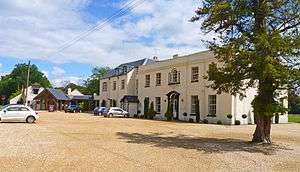
The East Close Hotel in Hinton, Hampshire, near Christchurch, Dorset, is a building of historical significance and a grade II listed building on the English Heritage Register.[1] It was built in 1768 as a home for two newlyweds and was used as residence for the next two centuries by many notable people. It is now a hotel and provides accommodation, dining facilities and catering for special events, particularly weddings.
Abraham and Margaret Spalding
It appears that Abraham Spalding, an immensely wealthy Swedish merchant, was the originator of East Close. A letter was written to his wife’s sister Sibylla Soddherland (nee Dickson) in 1769 when she was staying with them and gives her address as East Close near Christchurch.[2] The previous year Sibylla wrote a letter mentioning that her sister Margaret Spalding was putting her Hinton house in order. This was the year that the house was built.[3]
Abraham Spalding was born in Sweden. He came to London and established a firm with Gustav Brander called Spalding and Brander. They were very successful business men and both became interested in scientific and cultural pursuits.[4] Abraham was a member of several English scientific societies.[5]
In 1767 Abraham married Margaret Dickson in Kensington London and in the following year they built East Close in Hinton. This may have been erected on the site of a 1720s farm house. The couple had no children and lived at Hinton and in London until 1782 when Abraham died. He was buried in Christ Church, Southampton.
John Levett and Mary Hawkes
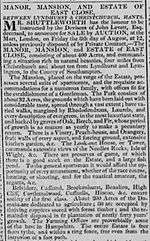
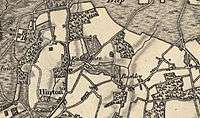
The next resident of East Close was John Levett (1725-1807). He bought the property in about 1790 and lived there until his death in 1807.[6] Living with him during this time was Mary Hawkes (1763-1834) but there is some mystery about her relationship with him. When he died his will stated that she would own the house until her death after which it would be inherited by his nephew. She was about 40 years younger than he so it is not known whether she was his illegitimate daughter, de facto wife or housekeeper/carer.
John Levett was born in 1725. His father was John Levett and his mother was Charlotte de Peleran, daughter of French diplomat Pierre Armand de Peleran. His father was an English merchant who conducted his business in Turkey and his brother was Francis Levett a very wealthy merchant who acquired property in Florida.[7] John also became a merchant and was an influential businessman in Calcutta. For some years he was alderman and later the Mayor of Calcutta.[8]
When he died in 1807 he was buried in the Priory Church in Christchurch. Mary Hawkes became the proprietor of East Close[9] and lived there as a recluse. A newspaper article stated that she "was a lady of considerable wealth but of the most eccentric manners and had for a great number of years lived in a state of entire seclusion constantly refusing to be seen by anyone but her servant."[10] When she died the house reverted to the John Levett Estate and was inherited by Levett’s relatives. They sold the house in 1834 and a description of it is given in the sale notice. Part of it reads as follows.
- "The mansion placed on the verge of the estate possesses several suites of apartments and the requisite accommodation for a numerous family, with offices fit for the establishment of a Gentleman. The Park consists of about 32 acres the grounds which have been laid out with considerable taste spread through a vast extent. They have varied walks margined by Rhododendrons, Laurels and every description of evergreens in the most luxuriant state and backed by groves of Oak Beech and Fir. There is a vinery, peach house and orangery, fruit walls of every aspect, forcing ground and extensive kitchen garden. The Look Out House or Tower commands extensive views of the Needles Rocks and Isle of Wight. There are preserves of game and a large fish pond."[11]
A map of Hinton drawn in 1846 gives an outline of the walks, trees and pond that exist at East Close at this time and is shown on the right. The tower mentioned in the advertisement seems to have been a notable feature of the garden as it is mentioned in a touring guide of the area in 1819. The guide says that on the right is East Hinton (another name for East Close) and there is a summer house in the grounds which a stranger may mistake for the tower of a Church.""[12]
After her death there was a large sale of the house contents and an auction catalogue was produced. A copy of this can be seen at this reference.[13]
The Tapps-Gervis-Meyrick family
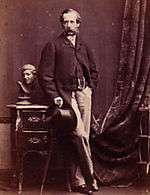
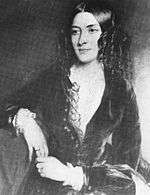

George William Tapps, 2nd Baronet bought the property in 1835.[14] His father Sir George Iverson Tapps 1st Baronet already owned the property Hinton Admiral[15] and when he died in 1835 George William inherited this house and added East Close to his estate. At this time he also changed his name to Tapp Gervis in keeping with this father’s will.
George William Tapps was born in 1795. He was educated to be a lawyer but he did not practice. Instead he became a Member of Parliament in 1826. He is also credited with having a large input into the development of Bournemouth. In 1825 he married Clara Fuller but unfortunately she died only six years later at the age of 29.[16] The couple had four children.
When George purchased East Close he was aged 39 and a widower. He also died at a young age being only 47 and leaving four young children. The eldest son George Elliott Tapps-Gervis, 3rd Baronet was only 15 when he inherited his father’s estate in 1842.
Sir George Elliott Tapps-Gervis was born in 1827 in Dover. In 1849 he married Fanny Harland who was the daughter of Christopher Harland of Ashbourne, Derbyshire. The couple had four children.
George became the owner of a very large number of properties. Besides Hinton Admiral and East Close he also owned Bodorgan Hall, Anglesey and was said to be landlord of almost the whole of Bournemouth.[17] In 1876 he assumed the name of Meyrick. He died in 1896 and left his estate to his eldest son.
East Close remained in the Tapps-Gervis-Meyrick family and was leased by many notable people. For example Baroness Frances Louisa Somerville leased the property for about twenty years after her husband Lord Kemlin Somerville died in 1864.[18]
In about 1940 it became a hotel and continues to operate in this manner today.
References
- ↑ Historic England. "Details from listed building database (1350863)". National Heritage List for England. Retrieved 1 October 2015.
- ↑ James Elphinston, “Forty years' correspondence between geniuses”, p. 189. Online reference https://archive.org/stream/fortyyearscorre00unkngoog#page/n259/mode/2up
- ↑ James Elphinston, “Forty years' correspondence between geniuses”, p. 166. Online reference https://archive.org/stream/fortyyearscorre00unkngoog#page/n237/mode/2up
- ↑ "The Correspondence of Edward Lye". Google Books. 12 March 2015. Retrieved 24 March 2015. p. 174.
- ↑ Musson, Albert Edward; Robinson, Eric (12 March 2015). "Science and Technology in the Industrial Revolution". Google Books. Retrieved 24 March 2015. p. 227.
- ↑ "The Gentleman's Magazine". Google Books. 12 March 2015. Retrieved 24 March 2015. Volume 77, Part 2, p. 981.
- ↑ Florida History Online. Online reference http://www.unf.edu/floridahistoryonline/Plantations/plantations/Julianton_Plantation.htm
- ↑ Bolts, William (12 March 2015). "Considerations on India Affairs; Particularly Respecting the Present State of Bengal and Its Dependencies". Google Books. Retrieved 24 March 2015.
- ↑ "Cary's New Itinerary; or, an Accurate delineation of the great roads ... throughout England and Wales; with many of the principal roads in Scotland from ... actual admeasurement.". Google Books. 12 March 2015. Retrieved 24 March 2015.
- ↑ Salisbury and Winchester Journal - Monday 27 January 1834, p. 3.
- ↑ Hampshire Telegraph - Monday 23 June 1834, p. 2.
- ↑ Bullar, John (12 March 2015). "A companion in a tour round Southampton". Google Books. Retrieved 24 March 2015.
- ↑ http://www.richardfordmanuscripts.co.uk/catalogue/8109
- ↑ "The Jurist ...". Google Books. 12 March 2015. Retrieved 24 March 2015.
- ↑ The History of Parliament. Online reference http://www.historyofparliamentonline.org/volume/1820-1832/member/tapps-george-1795-1842
- ↑ The Peerage website. Online reference http://thepeerage.com/p56442.htm#i564417
- ↑ The Times, 9 March 1896, p. 6.
- ↑ "The Upper Ten Thousand for ...". Google Books. 12 March 2015. Retrieved 24 March 2015.
External links
Coordinates: 50°46′17″N 1°41′47″W / 50.7714°N 1.6964°W